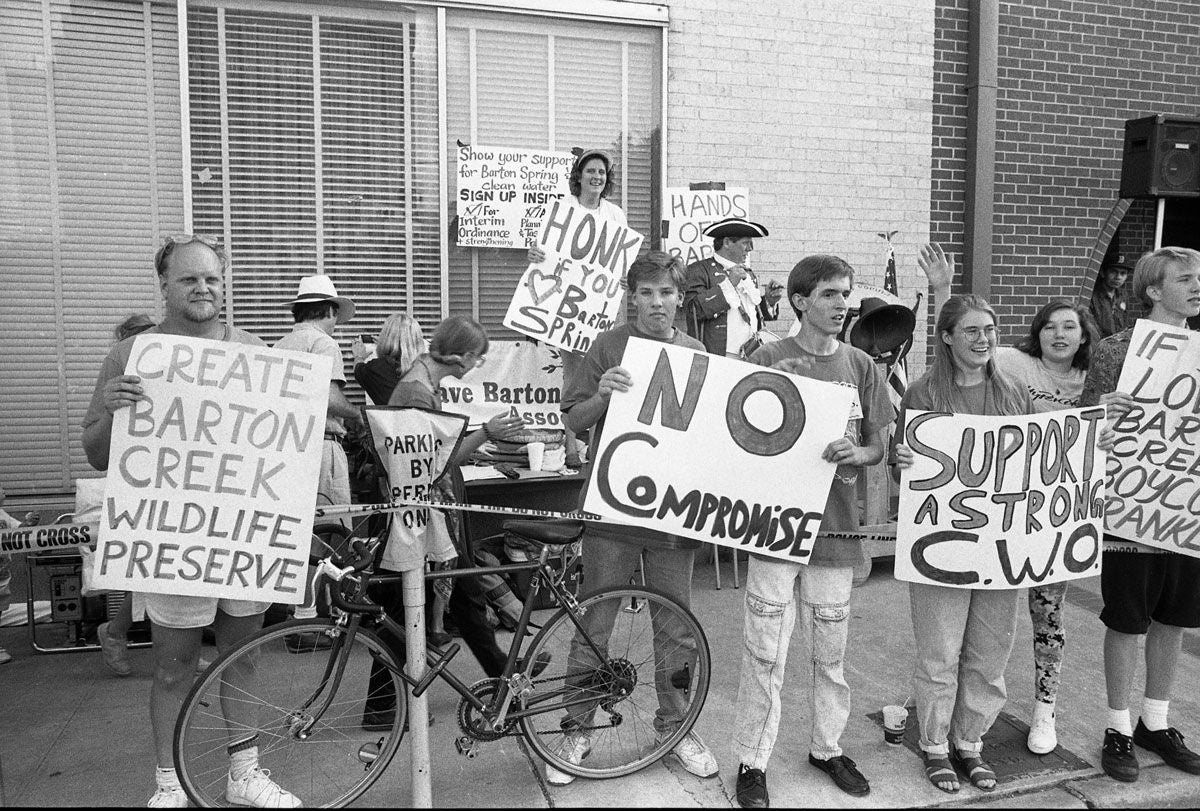The Fight to Save Barton Creek
The Fight to Save Barton Creek
How Moody College Professor Karen Kocher is Preserving Austin’s Green History
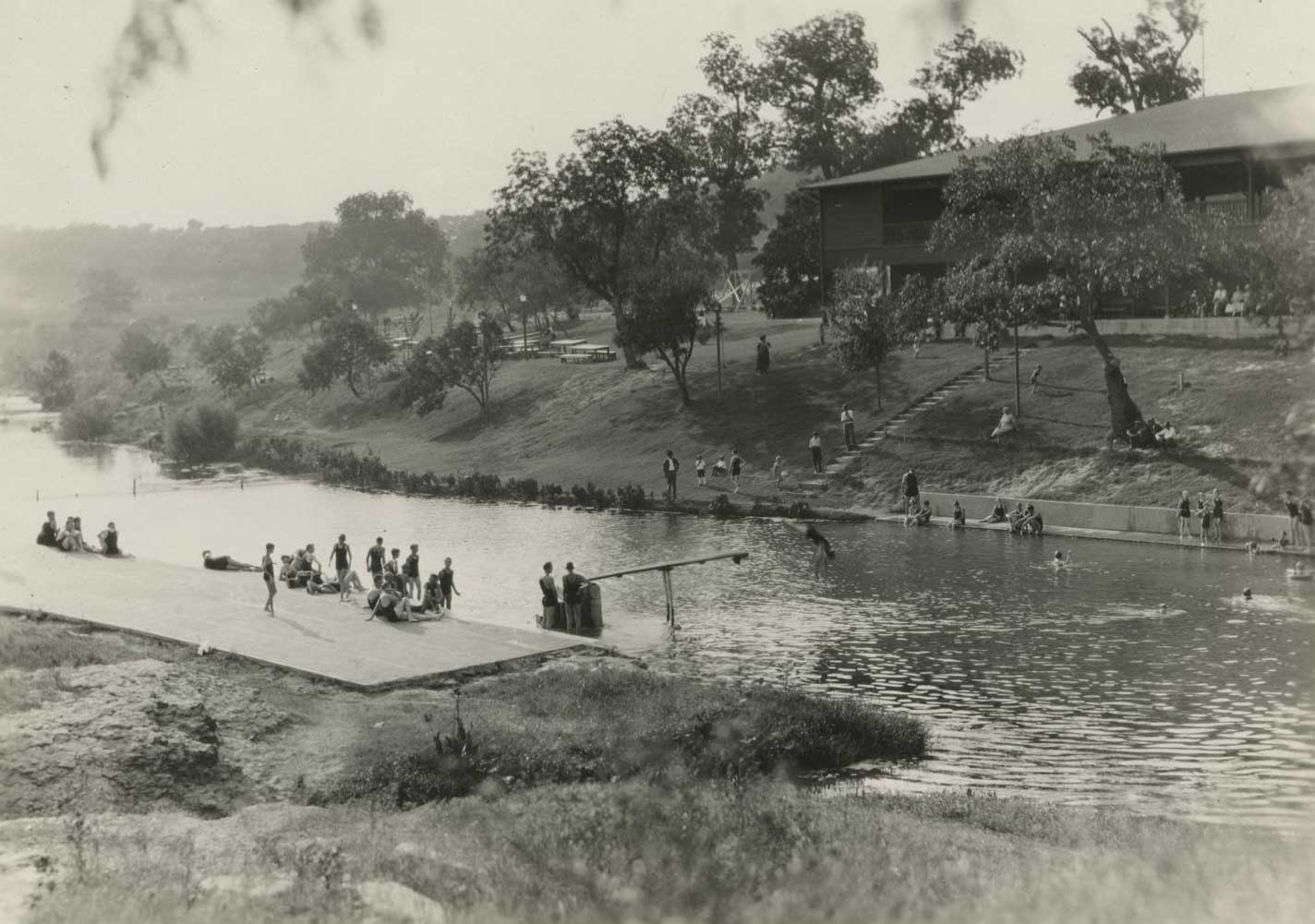
Radio-Television-Film Professor of Practice Karen Kocher is constantly fighting the green fight, even in her own home.
“Wait a second, that goes in the compost!” is something you might typically hear.
Whether it’s scolding her husband about sorting waste, scrambling to organize a zero-waste event or working on environmental media projects, including films and historical websites, Kocher has established herself as a tremendous advocate for preservation in Austin.
“I tend to like projects that are encyclopedic,” she said. “I just like to dig in.”
Kocher’s love for serving her community began as a graduate student at The University of Texas at Austin, where she spent her days roaming the Austin History Center. It’s where she fell in love with the city’s precious Barton Creek and where her passion for Austin’s active community spirit blossomed.
The Barton Creek Greenbelt, just southwest of downtown, has been a pillar of the Austin community for decades and holds immense cultural and environmental significance, providing remarkable natural beauty and many recreational opportunities.
Kocher’s most recent project, the Barton Creek Time Stream, tells the story of the more than 50-year effort to save the revered waterway. Originally a physical exhibit showcasing the history of Barton Creek, it launched on the 50th anniversary of Earth Day in 2020 with a grand opening that comprised of a splash exhibit and scavenger hunt. It has since transitioned into a valuable online resource featuring an interactive and comprehensive collection of the stories that made Barton Creek and of the people and the community that have supported it.
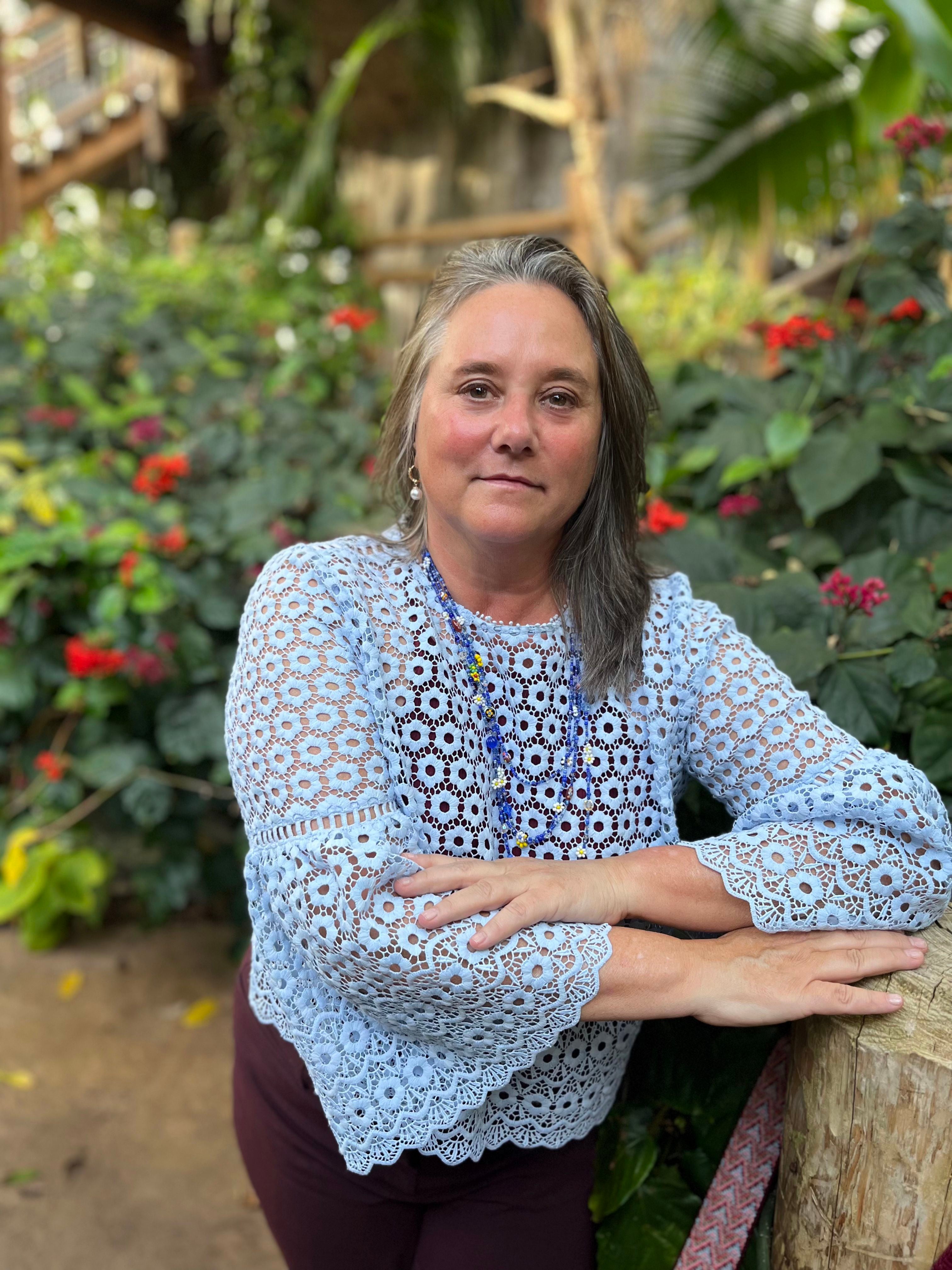
Radio-Television-Film Professor of Practice Karen Kocher.
Radio-Television-Film Professor of Practice Karen Kocher.
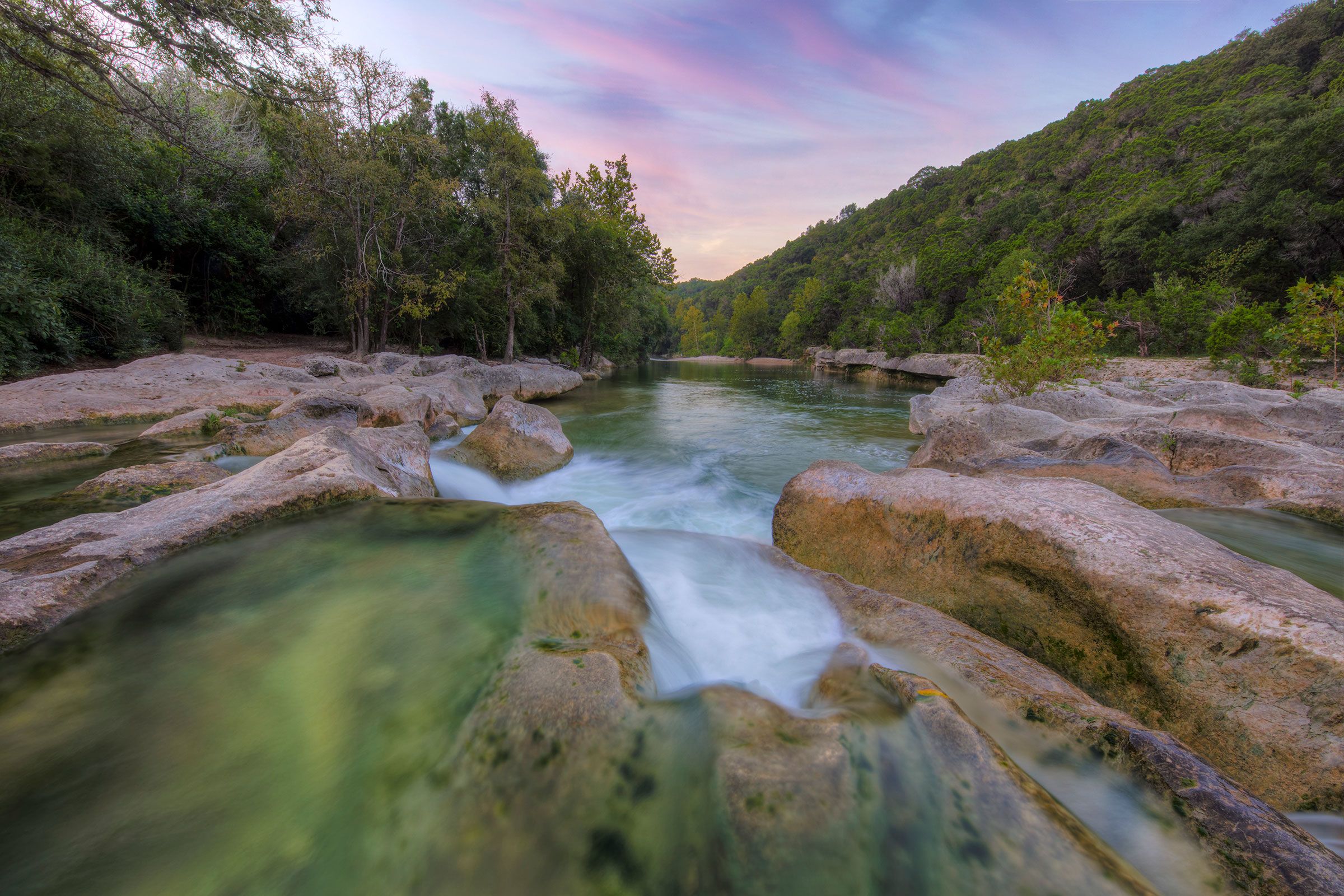
Sculpture Falls present day. Photo credit: Rob Greebon
Sculpture Falls present day. Photo credit: Rob Greebon
The Barton Creek Time Stream includes a comprehensive timeline that outlines the events that took place at Barton Creek from 1952 up until today. Every event links to a scrolling page of historical information. You can look at the events by theme, like the “History of Environmental Threats” or “Barton Creek Lawsuits Over Time.”
The map section features a sprawling array of pins, all demonstrating the various geographical features of Barton Creek and showing the rich history of the land. One entry, “The Flats,” tells the story of the popular swimming spot through a series of paintings created at different times of day. Just as Kocher envisioned, the map takes the project to another level, allowing for new, diverse voices to be heard.
“Our goal was to get this history down because people enjoy it, but they have no idea of the effort that went into protecting it,” Kocher said. “My goal is to make a record of what happened here for the future.”
Kocher created the time stream with her producing partner, Radio-Television-Film and Journalism and Media Alum Monica Flores, who has worked alongside her on various projects over the years. Flores called Kocher a master historian, a dedicated content creator and a true conservationist. “She has absolutely no ego,” she said.
Last year, Kocher was named one of the Austin-American Statesman’s Extraordinary Women, and the Barton Creek Time Stream has won several awards, including the 2023 Texas Digital Library Excellence Award.
The project has already launched a new curriculum in the Austin Independent School District, which has integrated it into thirty-four AP Environmental and Aquatic Science classes. By encouraging young people to understand the history of the environment and get outdoors they learn to become better stewards of the land.
“A major part of inspiring the community is teaching Austin’s youth this history,” Kocher said.

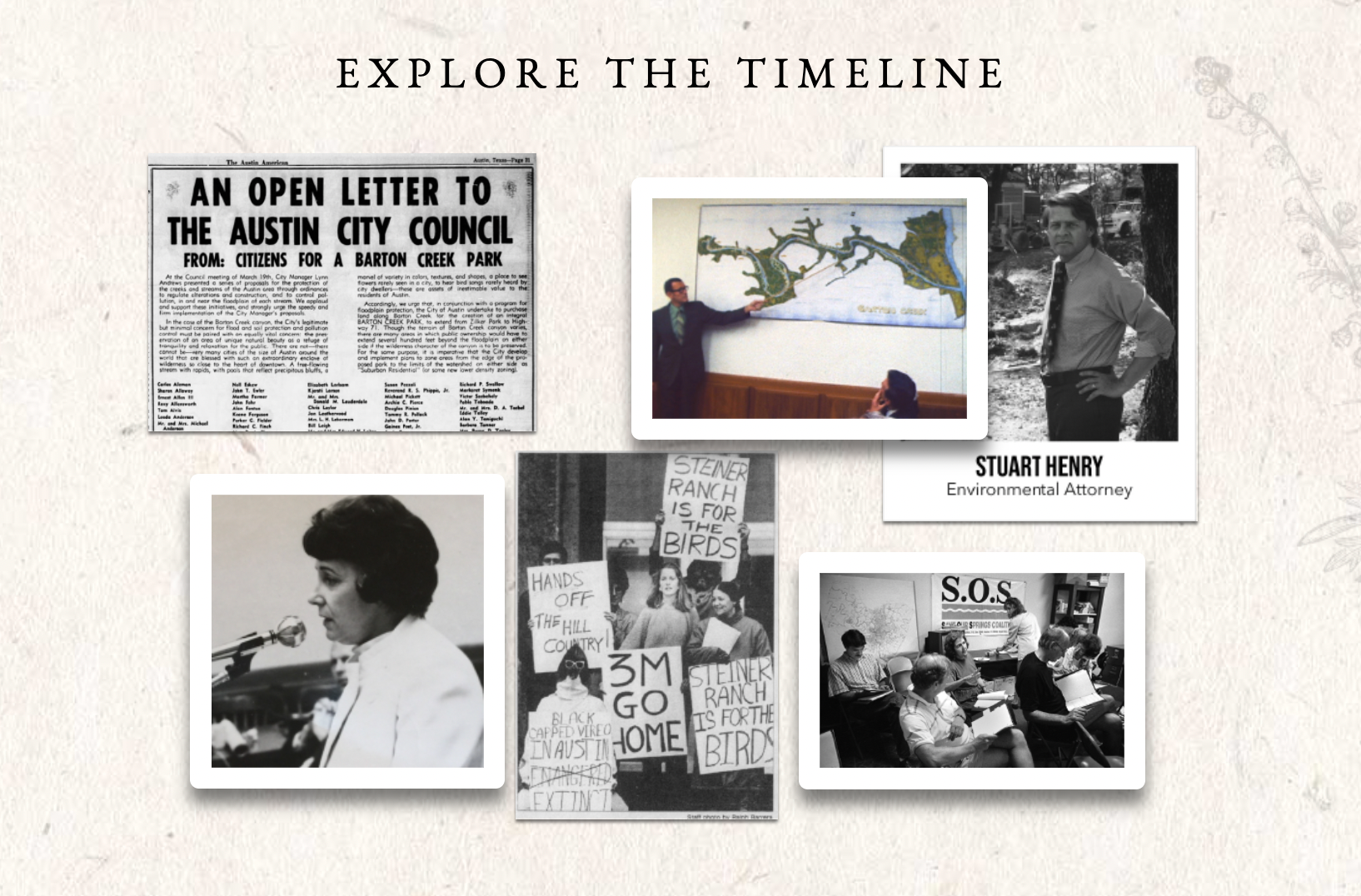
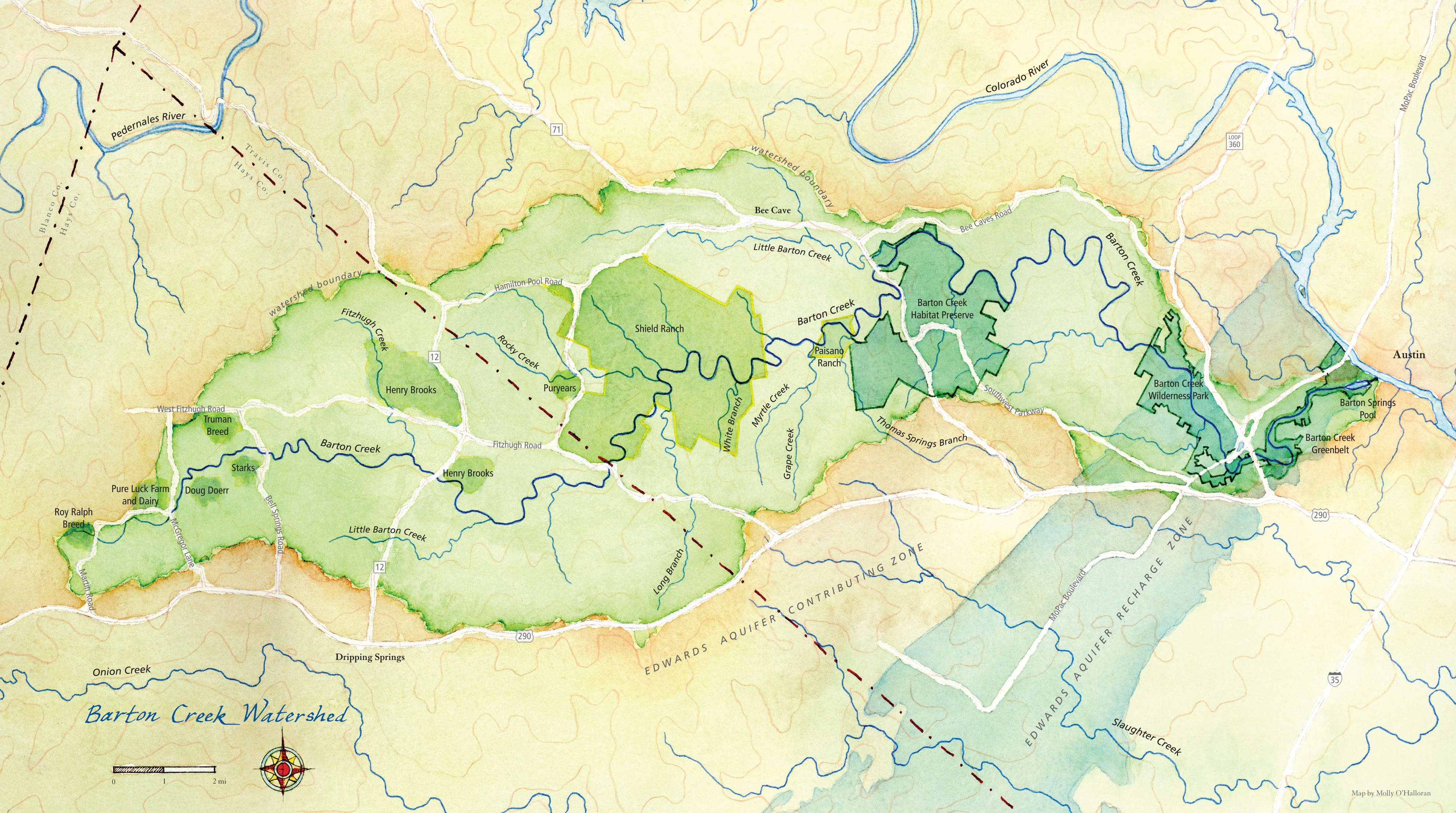

When this photo was taken in 1899, Barton Creek could only be accessed by boat. Photo credit: Karen Thompson.
When this photo was taken in 1899, Barton Creek could only be accessed by boat. Photo credit: Karen Thompson.

Timeline from the Barton Creek Time Stream website.
Timeline from the Barton Creek Time Stream website.

Map of Barton Creek created by Molly O’Halloran.
Map of Barton Creek created by Molly O’Halloran.
Clark Hancock, president of the Save Barton Creek Association, calls Kocher an incredible visual storyteller who presents stories in a way that is accessible to a modern audience. He describes her as tenacious, talented and optimistic, skilled in community outreach and actively involved and dedicated to her work.
Hancock has been fighting to save Barton Creek for decades and says it’s the community’s responsibility to humble itself in the presence of natural beauty. He believes the Barton Creek Time Stream sheds light on the beauty of the small things and can teach us how human activity should coexist with the natural world.
Over the years, Kocher has produced various digital projects chronicling Austin’s history. Her first film “Common Ground: The Battle for Barton Springs” in 1992 told one part of the Barton Creek story and her first multimedia website project “Austin Past and Present” in the early 2000s covered the expansive history of the city.
Kocher recently received a UT Development Award to work on her next environmental film, which will explore the creation of the Barton Creek Wilderness Park, a nature preserve that is the upper section of Barton Creek Greenbelt. It will add to her expanding collection of environmental history films, teaching people how to fight the green fight by allowing them to go back in time, without having to go anywhere.
“If people organize, they can get together and make a difference,” Kocher said.
